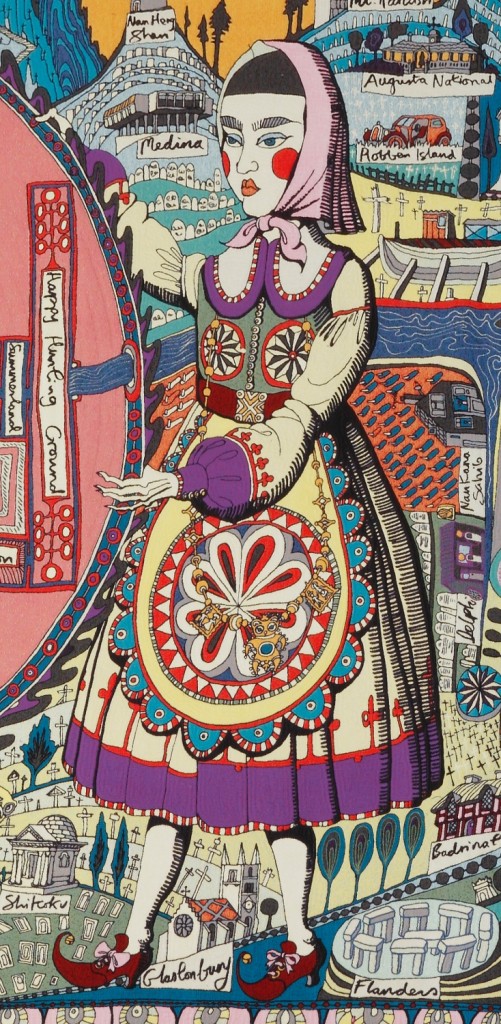Grayson Perry is as famous for his craft-inspired art as he is for his cross-dressing public persona. Traditional form and current social subject matter work in a synergy to give substance and humanity to his work. For instance, the large vases adopt the classic shapes of Grecian and Oriental artefacts, yet they are adorned with depictions of contemporary traumatic events rendered with a mix of traditional and contemporary techniques. As Perry himself says about the violence and politics in his work, “without it, it would be pottery. I think that crude melding of those two parts is what makes my work.”

More than the mere incongruous juxtaposition of form and substance, his willingness to be a public persona beyond the art world also contributes to raising awareness of his work and the ideas it engages with. Indeed, Perry received the Turner Prize in 2003, ultimate badge of recognition in the art world, but he also appears on public affairs television dressed up as a doll-like figure. The Tomb of the Unknown Craftsman, the current exhibition curated by Grayson Perry at the British Museum takes the artist’s process a step further.
The exhibition comprises a mix of pieces from the museum’s collection displayed alongside some of Perry’s new work in a seamless thematic hang that sheds new light on both the historical and the contemporary. Starting from the premise that the British Museum is a tomb of sorts, Perry outlined a number of themes that also inspire his work: shrines, magic, sexuality, etc. Where some elements of the British Museum’s collection are obvious sources of inspiration for Perry, some are brought in strictly for their aesthetic qualities or their oddity – a mummified ear lobe with lavish gold earring still attached has a transfixing effect.
- Grayson Perry, Map of Truths and Beliefs, (detail), 2011.
The thematic approach highlights the incredible skills that have gone into creating all these objects. It is the plight of craftsmen to remain anonymous and it is not without irony that Perry uses his own fame to honor them. Yet the star of the exhibition is an intricate iron memorial that Perry crafted out of iron. It is laden with historical and cultural references.

The exhibition opens with a customized motorcycle emblazoned with pastel hearts and featuring a miniature shrine to Alan Measles, Perry’s teddy bear God figure. He used the motorbike to tour Germany in 2010 as a metaphorical peace-making process with his childhood fears of the Teutonic nation. The object is not something you would expect at the British Museum, yet it is a perfect example of contemporary craftsmanship and sets the tone for the exhibition: this is not about artistic or historical scholarship, it is tribute to those of made the object that scholarship now examines. As Perry regularly states, “Hold your beliefs lightly” and the British Museum won that gamble by loosening their approach and inviting Grayson Perry to play with their collection.














